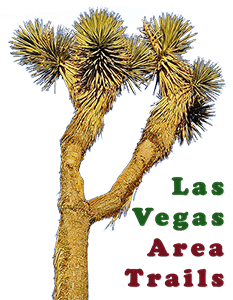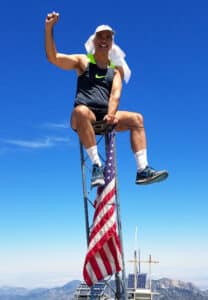Death Valley Crossing | Death Valley National Park, California
The wind was roaring today! I did have a sound muffler, but that was, at times, not enough!
Where the sound is blotted out by the wind, I’ve added annotations to the video.
Overview | Death Valley Crossing | Death Valley National Park, California
What’s really out there in the middle of Death Valley? Visitors to Badwater can be seen on any given day processing in a line from Badwater outward as far as they can go across the desert. The most ambitious usually turn around after about a quarter mile. But we’re all drawn into the desert by the curiosity we share.
The goal today was to cross Death Valley from Badwater to Shorty’s Well at Hanaupah Canyon and then proceed up Colville Ridge as far as possible toward Mahogany Flat in the Panamint Range. However, on this day I was brought to a sudden stop by something you’d least expect to find in the middle of Death Valley! Here, you’ll learn what that was.
In addition, you’ll get a first-hand experience what it’s like in the middle of Death Valley.
Best Time for This Adventure
I can’t overstress: Don’t try this anytime between April and October! The surface of Death Valley get’s hot enough during a few of those months to fry an egg…and to fry you too! Air temperatures can easily rise over 130 degrees. Have experience hiking in the desert. Don’t let this be your first excursion! On the first week of March I carried 4 liters of water to be on the safe side. Temperatures were between 50 and 70 degrees. But then, the wind was roaring!
More Than “Which Month”
But it’s not just about which month to make this excursion. Believe it or not, it does rain in Death Valley. The floor of the desert was once a huge lake! So, you’ll want to ensure that it has not rained at least in the 2 weeks before attempting a Death Valley Crossing. And here’s the challenge: Crossing when the desert is dry, yet before it heats up. That can be a very small window!
Death Valley Trade-Offs
With Death Valley, it’s always a trade-off: The lesser of evils: Wet vs. Dry vs. Hot vs. Windy vs. Snow in the Panamint Mountains…etc. That’s why it’s called Death Valley.
Distances Are Deceiving
And, one more point: Distances are deceiving! Crossing Death Valley may look like it’s a short walk, but don’t be fooled. It’s a lot further than it looks! You can head West across Death Valley, continue for quite a while, then look up…the mountains on the other side seem as far if not further then they were when you started! And then, there’s the reality of having to turn around and make the return trip with less energy — potentially far less energy — and less water!
In fact, it may be enough just to watch the video on this page to get the closest thing to a virtual experience of the middle of Death Valley.
All that said, it’s spectacular out there…the wonder sinks into your soul!
Route Starting Point | Death Valley Crossing | Death Valley National Park, California
From Las Vegas take Hwy 95 North to Beatty, Nevada. At Beatty Nevada take Hwy 394 (Daylight Pass Road) toward Death Valley National Park. About 10 miles after summiting Daylight Pass, take the left split toward Furnace Creek Ranch. Continue to the “T” intersection with Hwy 190 and take a left. Pass Furnace Creek Ranch and in a couple miles at The Oasis in Death Valley turn right onto Badwater Road and continue for about 15 miles to Badwater. I parked on a wide shoulder just past Badwater right before the road made a turn South. Alternately, you could park at Badwater, but that parking lot fills up fast, overflows, and it just doesn’t feel right to take a tourist parking spot for the entire day.
Observations | Death Valley Crossing | Death Valley National Park, California
I started out Westward across Death Valley beginning just South of Badwater in order to answer the question, “What’s it like out there?” I made it a little over half way – the total distance is about 8 miles at that point in the valley – where I was stopped by…believe it or not…a river!
Along the way, what did I see and record in the video?
- Snow white salt flats: There were two or three wide ribbons of salt to cross. Beneath that thin layer of salt was slippery, sinky mud. It wasn’t too long before each of my shoes gained two or more pounds of mud. It was like carrying ankle weights! I sunk down with each step so the going was slow. The trail of footprints will soon disappear due to the action of wind, rain and salt.
- Weird geometric shapes: These were formed as the earth dried and cracked with salts pushing upward through the surface. This ground was brown and looked more like soil. And, for now the brown ground was much firmer than the slippery, slidy salt.
- Sharp jagged-edged salt mounds: I always carry an extra pair of shoe laces. The cutting edges in the desert have slashed my shoe laces before leaving loose shoes that easily slip off. And, what would you do if you had to walk across ground like this with bare feet. Whatever you do, don’t fall and cut yourself: Instant injection of salt into the wound!
- Finally, water-saturated deep deep mud: This brown ground was not firm. There were small streams flowing throughout, along with the Armargosa River flowing through the middle of this stretch. Where the earlier mud in the salt flats was 2-3 inches deep, this mud could easily have been waste deep. Definitely a “career limiting move“, CLM…to continue. This is where I turned around. I’m reminded of an experience a friend of my daughter had while hiking with us in Death Valley on the mud hills above Furnace Creek Ranch. She sunk knee deep into the mud. When she was finally able to pull her foot out, her shoe didn’t make it. It will be 2-3-feet deep below the now rock-solid mud. Perhaps one day an archeologist will find it and wonder why these ancient peoples wore only one shoe!
What is the Floor of Death Valley Made Of?
I’m no geologist, but here’s my best guess based on observation:
Base Layer Beneath the Floor of Death Valley:
The bottom layer deep down would be formed by the sedimentary rocks, including sandstone, shale, limestone, and a conglomerate of the gravel, sand, and silt you see fanning out from the canyons on either side of Death Valley. These rocks were deposited over millions of years as layers of sediment in a variety of environments, including ancient lakes, rivers, and seas.
Intermediate Layers Beneath the Floor of Death Valley:
Next comes layers of minerals, including borax, halite (rock salt), gypsum, and various types of clay. Borax, which is used in the production of detergents and other products, was a major mining product in Death Valley during the late 19th and early 20th centuries. Halite and gypsum are common evaporite minerals that form when water evaporates, leaving behind dissolved minerals.
Top Layers on the Floor of Death Valley:
This is what you’d walk upon, were you to cross Death Valley. This is a thick layer composed of mud, soil and salts pushing up through the surface creating fantastic designs as unique to one another as snowflakes. The depth of mud on the floor of Death Valley can vary widely depending on a number of factors, including recent rainfall, flooding, and erosion. In some areas, the mud may be only a few inches deep, while in other areas it may be several feet deep and very unstable. This is where I turned around in order to venture forth on another day!
The Amargosa River in Death Valley
There is no permanent river that flows through Death Valley. The region is known for its extreme aridity and lack of surface water, with annual rainfall averaging less than 2 inches (5 cm) per year. However, there are several intermittent streams and creeks that flow through the valley during periods of heavy rain or snowmelt, including the Amargosa River, which runs along the eastern edge of Death Valley National Park. The Amargosa River originates in the Mojave Desert and flows northward through Nevada before turning southward and entering Death Valley.
Distances in Death Valley Can Be Deceiving
Walking across Death Valley can be far more challenging that it looks. Distances are deceiving. You can walk and walk and walk…then look across to the other side which may appear further away that when you started. And, it’s dry even in the Winter. The wind and salts suck all the moisture out of your skin…and lungs. I carried 4 liters of water on this day. Don’t run out of water!
The Floor of Death Valley is Wonderful!
All that said, it’s truly wonderful out there…like being in another world! I can see why that procession of hikers at Badwater are not content to just visit Badwater. They’re drawn deeper and deeper into the desert!



